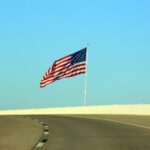Explore the World's Premier Food and Wine Tourism Destinations: A Complete Guide to Unforgettable Culinary Journeys


Photo by ALEXANDRA TORRO on Unsplash
Introduction: The Rise of Food and Wine Tourism
Food and wine tourism has become a leading travel trend, offering enthusiasts unforgettable ways to experience culture, history, and local traditions through taste. Whether you dream of sipping Chianti in Tuscany’s rolling hills, savoring tapas in Spain, or exploring boutique vineyards in South Africa, the world abounds with unique destinations that blend gastronomy and viticulture. This comprehensive guide will introduce you to top food and wine destinations, highlight exclusive experiences, and provide actionable steps for planning your journey.
Unveiling the World’s Top Food and Wine Destinations
Traveling for food and wine lets you immerse yourself in local life, connect with passionate producers, and enjoy memorable flavors. Here are some of the most acclaimed regions to consider:
France: The Heart of Culinary Excellence
France remains the global benchmark for fine food and wine. Regions like Bordeaux, Burgundy, and Champagne are legendary for their vineyards, historic châteaux, and gourmet experiences. Paris offers Michelin-starred dining and neighborhood bistros, while Provence delights visitors with lavender fields, rosé wines, and bustling markets. For a deeper dive, consider guided vineyard tours, truffle hunting in the countryside, or cooking classes with local chefs. Many wineries and culinary schools offer English-language programs; search for “French vineyard tours” or visit regional tourism boards for current options [1] .
Italy: Tuscany and Beyond
Tuscany is synonymous with enchanting landscapes, medieval villages, and world-class wines like Chianti Classico and Brunello di Montalcino. Visitors can explore historic estates, participate in olive oil tastings, and dine on fresh, locally sourced cuisine. Many tours include stops at award-winning wineries and allow you to meet winemakers, enjoy cooking demonstrations, or attend summer food festivals. For a full experience, look for “Tuscany wine tours” or contact travel specialists who focus on Italian culinary journeys [3] .
Spain: Rioja and Catalonia
Spain boasts dynamic food scenes and celebrated wine regions. Rioja is home to renowned vineyards such as Bodegas de los Herederos del Marqués de Riscal, named the top vineyard in 2024. Catalonia’s Priorat and Penedès offer robust reds and sparkling cavas, often paired with tapas or Mediterranean seafood. Many Spanish wineries host wine-tasting events, vineyard picnics, and seasonal festivals. The Spanish Tourism Board or local wine consortia can guide you to reputable tours and experiences [4] .
United States: California’s Napa Valley and Santa Barbara
California is America’s wine capital, with Napa Valley and Santa Barbara drawing enthusiasts year-round. Napa offers luxury tastings, vineyard bike tours, and gourmet pairings, while Santa Barbara is known for its cool-climate varietals and coastal cuisine. Many wineries require advance reservations, especially for exclusive tastings. For the most current options, consult official travel and tourism bureaus for Napa and Santa Barbara, or search for “California wine country tours” [2] .
Australia: Barossa and Hunter Valleys
Australia offers innovative cuisine and world-class wines. The Barossa Valley is famous for robust Shiraz and historic estates, while Hunter Valley features boutique wineries and gourmet experiences. Many tours offer tastings, vineyard picnics, and behind-the-scenes access. To arrange a visit, check with regional tourism authorities or search for “Australian wine tours” [1] .
South Africa: Stellenbosch and Franschhoek
South Africa ‘s Stellenbosch and Franschhoek regions are known for their picturesque vineyards, unique grape varietals like Pinotage, and culinary excellence. Many estates offer wine safaris, historic tours, and food pairings with local specialties. For up-to-date tour information, consult South Africa’s official tourism website or search for “Stellenbosch wine tours” [5] .
Emerging and Hidden Gems
Beyond the classics, consider regions like Tokaj in Hungary (famed for sweet dessert wines), Mendoza in Argentina (Malbec and harvest festivals), and Crete in Greece (historic vineyards and Mediterranean cuisine). These destinations offer authentic experiences with fewer crowds. To explore, search for “wine tourism in [region]” or connect with local travel agencies for recommendations [1] .
How to Access Food and Wine Tourism Opportunities
Planning a food and wine travel experience involves several key steps:
1. Research Destinations and Timing
Start by identifying which region best matches your interests, preferred cuisine, and travel season. Consider annual festivals, harvest periods, and local events. Many destinations have peak times for culinary festivals or grape harvests, which offer immersive experiences but may require advance booking.
2. Book Reputable Tours and Experiences
Many regions have official tourism boards or associations of wineries that curate tours and culinary experiences. To ensure authenticity and quality, use official channels or well-known travel providers. For example, the “World’s Best Vineyards” organization releases an annual list of top destinations, which can guide your choices [4] . When in doubt, search for the official tourism bureau of your target region and review recent traveler feedback.
3. Reserve Accommodation and Transportation
Accommodations range from luxury vineyard hotels to rustic farm stays, each offering a unique way to connect with local culture. Many wineries also offer on-site lodging or packages that include transportation and meals. Consider your transportation needs; some regions are best explored by car, while others have organized shuttle services or guided group tours.
4. Participate in Local Food and Wine Events
Look for seasonal festivals, cooking classes, guided tastings, and farmer’s markets. These events often provide hands-on opportunities to learn from local experts. Some destinations offer grape-stomping, harvest dinners, or chef-led foraging tours. For up-to-date listings, consult regional tourism websites, local event calendars, or inquire directly with wineries and restaurants.
5. Alternative Approaches and Virtual Experiences
If travel is not immediately possible, many wineries and culinary schools now offer virtual tastings and online cooking classes. These experiences can be a gateway to planning a future trip and often include shipping of wines or specialty ingredients to your home. To find options, search for “virtual wine tasting” or “online cooking class” with your region of interest.

Photo by Alexandre Vasconcelos on Unsplash
Challenges and How to Overcome Them
Some challenges you may encounter include language barriers, seasonal closures, or travel restrictions. To address these:
- Use translation apps or join tours with English-speaking guides.
- Check official tourism websites for seasonal operating hours and event dates.
- Consider traveling during shoulder seasons for fewer crowds and more personalized service.
If you have dietary restrictions or accessibility needs, contact venues in advance to confirm accommodations. Many wineries and restaurants are happy to tailor experiences with advance notice.
Step-by-Step Guide for Planning Your Culinary Getaway
- Define your destination preferences (wine varietals, cuisine style, region).
- Research the best travel season for food and wine events in your chosen region.
- Search for official tourism websites or reputable travel agencies specializing in culinary tours (e.g., “[Region] wine tourism board”).
- Check recent reviews and verify that experiences are currently available and align with your interests.
- Book tours, accommodations, and transportation well in advance-especially for high-demand events.
- Prepare for your trip by learning basic local phrases, reviewing event schedules, and confirming dietary or accessibility needs.
- Upon arrival, ask locals for insider tips on hidden gems and lesser-known experiences.
Key Takeaways
Food and wine tourism unlocks a world of flavor, tradition, and hospitality. Whether you’re drawn to classic regions like Bordeaux, Tuscany, or Napa Valley, or seeking authentic adventures in emerging destinations, there are countless ways to craft a meaningful journey. With careful planning, use of official resources, and openness to local culture, your next travel experience can be as rich and memorable as the world’s finest wines.
References
- [1] A Way To Go Travel (2024). The 10 Best Food and Wine Destinations Around the World.
- [2] Travelling Weasels (2024). Best Travel Spots for Wine Lovers Around the World.
- [3] Wine Investment (2024). Top 10 Summer Wine Travel Destinations.
- [4] WineKeller (2024). World’s Best Vineyards.
- [5] One Girl, Whole World (2024). Hidden Gem: Best Wine Regions to Visit.






